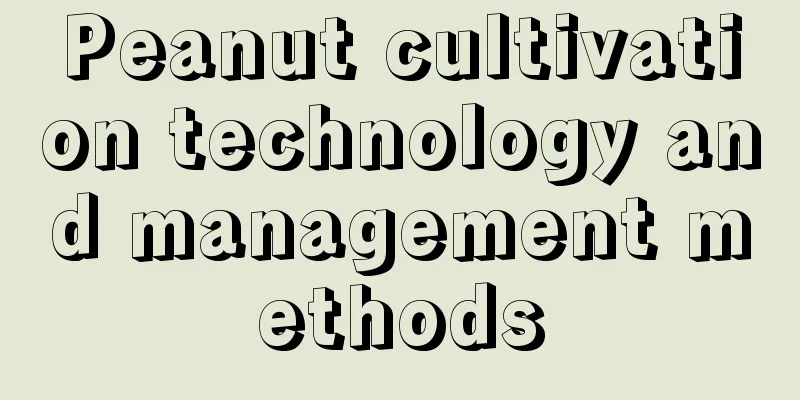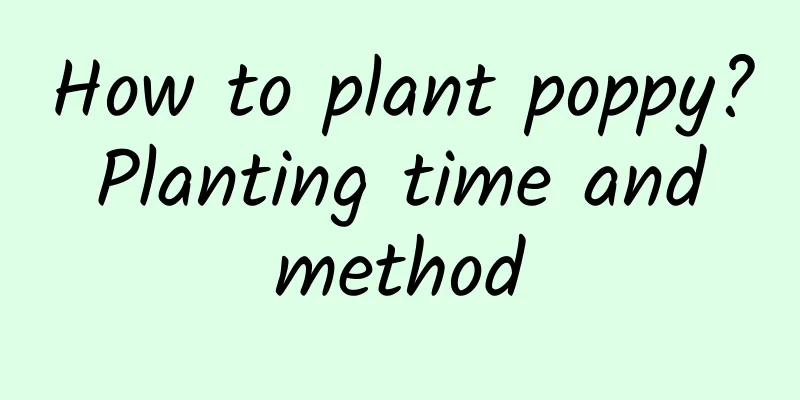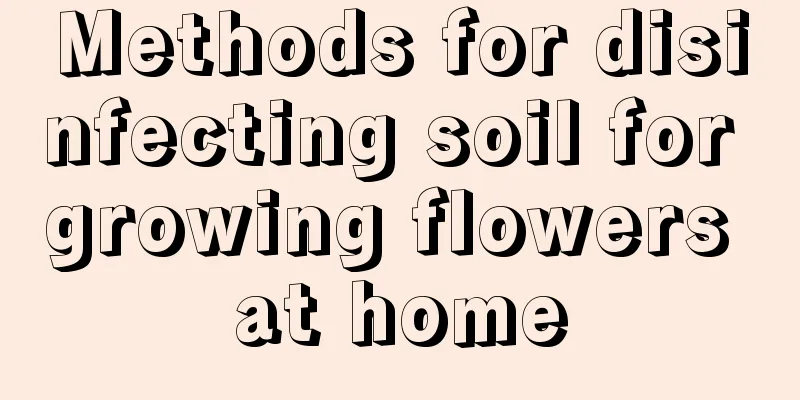Peanut cultivation technology and management methods

|
As an important oil crop , peanuts are easily attacked by diseases and pests during their growth, which not only affects the normal growth of peanuts, but also may cause damage to the economic benefits of farmers. Therefore, strengthening peanut planting management, adopting high-yield cultivation techniques , and strengthening pest and disease control measures are crucial to increasing peanut yields and ensuring quality. Below we will learn about peanut cultivation techniques and management methods. 1. Plot selection and preparation Choose well-drained, fertile sandy soil for planting peanuts, and avoid saline-alkali land and repeated cropping. The ideal soil pH is around 7.0 to promote root development. The arid areas in the north are suitable for flat farming, while plots with good irrigation conditions can be cultivated on ridges, and low-lying land requires high ridges. When applying base fertilizer, you can use farmyard manure, superphosphate, ammonium carbonate and potassium fertilizer, or use triple compound fertilizer . 2. Seed treatment Choose seeds with strong disease resistance and good quality, dry them in the sun for 1 to 2 days before sowing, and remove bad kernels after shelling to increase the germination rate. Use 75% methyl thiophanate to dilute and mix with seeds, then sow after drying to enhance disease resistance. 3. Sowing The best time to sow is from April to May, when the temperature is above 10°C and there is sufficient sunlight. Summer sowing of peanuts should be done about 10 days before or after wheat harvest. The sowing depth should be controlled at about 5cm, and the seedlings should be checked and replanted in time after emergence. 4. Water and Fertilizer Management 1. Water management Generally, no watering is required during the seedling stage, and drought can promote root development. Water should be added in time during the flowering needle stage and pod setting stage to avoid drought. 2. Fertilization management Peanuts require trace elements such as potassium, phosphorus, calcium, molybdenum, and boron. Farmyard manure, compound fertilizer, phosphorus fertilizer, and potassium fertilizer should be used as base fertilizer. Pay attention to the amount of nitrogen fertilizer used to avoid excessive growth. 5. Field Management Strengthen field management and carry out tillage and weeding in a timely manner. Exposing the cotyledons during the seedling stage promotes growth. When the plant grows to 30-35 cm in height, use growth regulators to control excessive growth. VI. Pest and disease control The main peanut diseases include stem rot and crown rot, which can be controlled by using fungicides such as pyraclostrobin. Pests include white grubs, wireworms, etc., which are controlled using insecticides such as thiamethoxam. 7. Harvest at the right time Peanuts should be harvested when the shells harden, the shell walls have blue-brown spots, and the kernels are full, to avoid harvesting too early or too late which may lead to a decline in quality. The above is an introduction to the key points of peanut cultivation and management techniques. Through the above measures, the yield and quality of peanuts can be effectively improved, the impact of diseases and pests can be reduced, and the economic interests of farmers can be protected.
|
<<: How to grow pineapple heads hydroponically
>>: How to make succulent leaves sprout fastest
Recommend
What are the varieties of dwarf fruit tree seedlings? The latest dwarf fruit tree seedlings
Fruit trees are highly praised as a very cost-eff...
How to grow potted jasmine? How to grow potted jasmine?
Jasmine potted cultivation method 1. Soil: When c...
Cultivation methods and precautions of Oncidium
Oncidium, also known as the auspicious orchid, da...
How to breed the Queen of the Cliff
Cliff Queen Growing Conditions The Queen of the C...
What vegetables can be grown in February?
Although it is now February and the Beginning of ...
How often should ginger be fertilized? What is the time and method of fertilization?
How often should ginger be fertilized? Ginger is ...
The efficacy and function of Centella asiatica
1. Stop bleeding Centella asiatica has good hemos...
The cultivation methods and precautions of Duzhanchun
1. Maintenance methods 1. Temperature: A slightly...
What is the reason why the leaves of white anthurium turn yellow?
Anthurium belongs to the genus Spathiphyllum of t...
The difference between green radish and spider plant, spider plant pictures
1. Different families Pothos is a vine, specifica...
How to propagate Anthurium
1. Division propagation It has a relatively stron...
What is the flower language of pearl bush?
1. Flower language: hard work, friendship Whether...
The efficacy and function of iron chopsticks
1. Ornamental value Generally speaking, all flowe...
What to do if lavender leaves wither? Lavender leaves dry up
1. Proper shade Lavender is a long-day plant and ...
The leaves of the green radish are as big as 10 palms. Look how people grow them!
1. How to grow green radish? 1. Fertile soil: It ...









